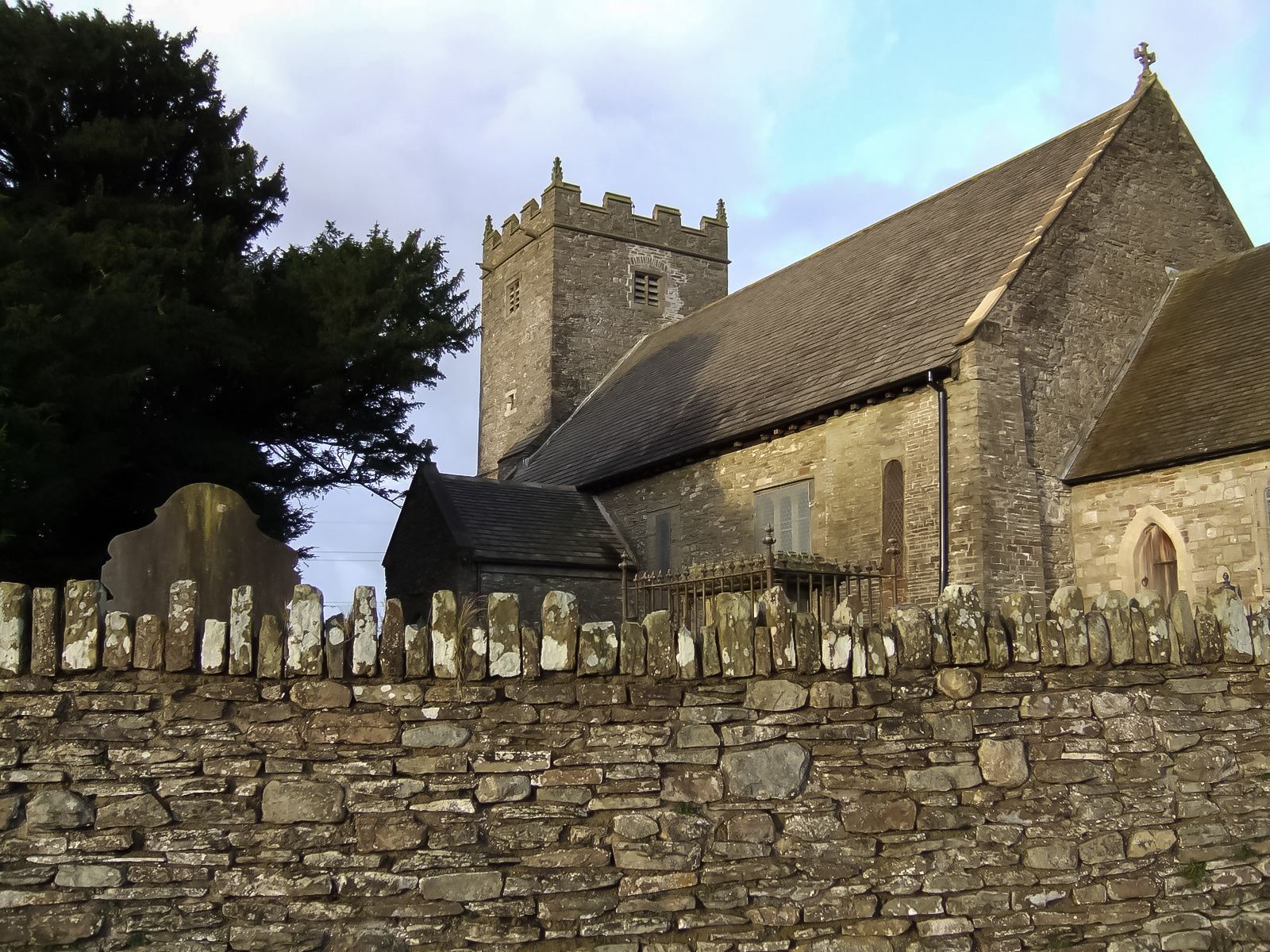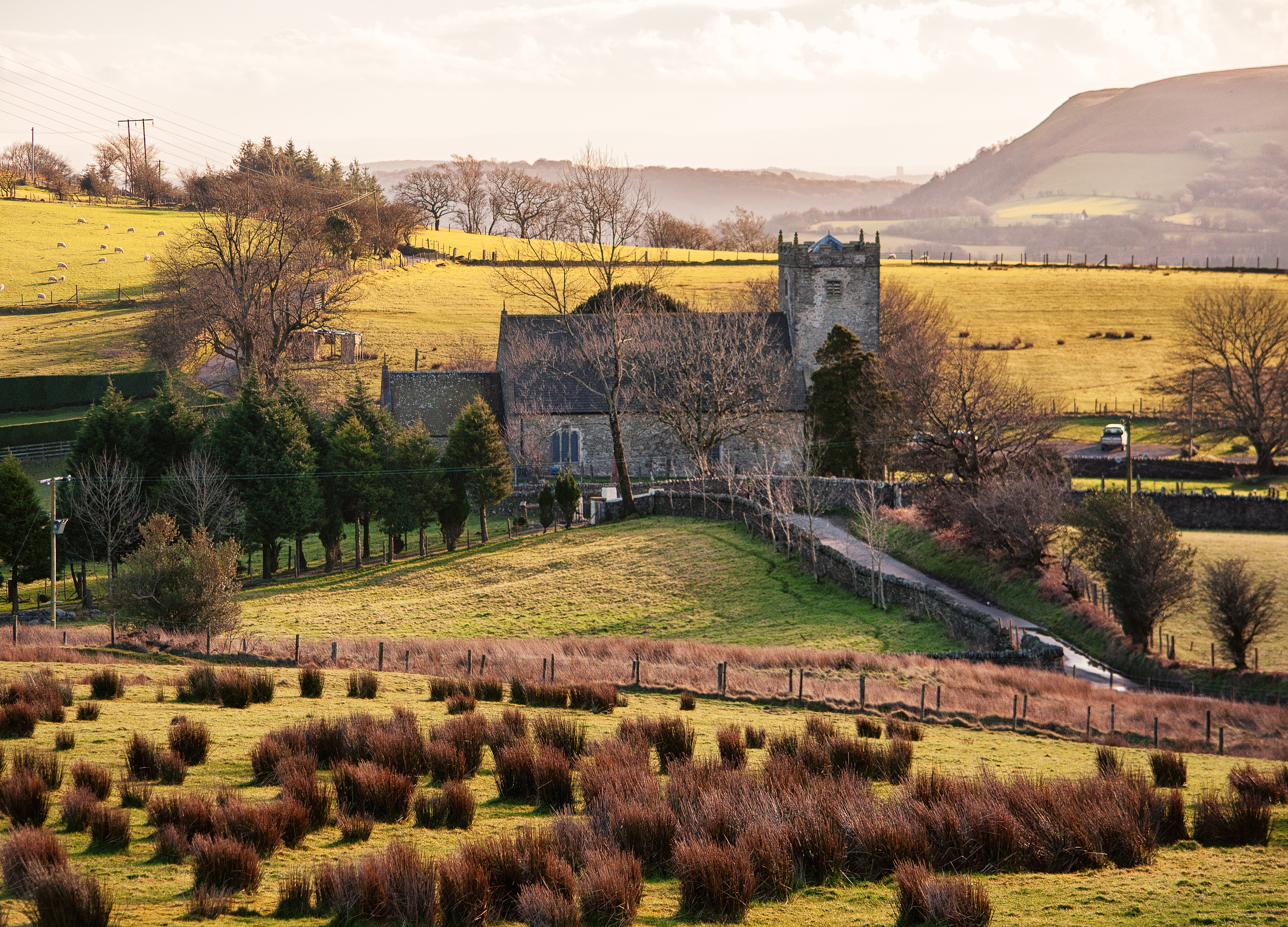Eglwysilan on:
[Wikipedia]
[Google]
[Amazon]
Eglwysilan is an 


accessed 30 January 2012 The parish church of Saint Ilan was built on the ridge between the Taff Valley and
, accessed 30 January 2012 Originally
accessed 30 January 2012, which quotes ''A Topographical Dictionary of The Dominion of Wales'' by Nicholas Carlisle, London, 1811. In 1801, the parish had dependent chapels at Llanfabon and St Martin. The resident population was reckoned to number 1885 people, 'residing in the hamlets of Eglwys Ilan, Ener Glynn, Glynn Tâff, Hendredenny, Parc, Rhyd y Byddin, and The Town of Caerphilly'. In 2012, the parish website stated the parish contained 8,000 people 'serving all of the Aber Valley and including the villages of Abertridwr and Senghenydd together with the hamlets of Eglwysilan and Groeswen'. Today, the hamlets of Pen-y-Groes, Eglwysilan and Groeswen are affluent commuter villages house prices significantly above the local average; the communities are inhabited by professionals with a high level of bilingualism. The churchyard contains the grade II* listed tomb of the bridge builder William Edwards and many of the victims of the Senghenydd Colliery Disaster of 1913. Evan James (poet), Evan James, who wrote the lyrics of the Welsh National Anthem, was baptised at the church.
Revd Rice Rees, Longman &c., 1836, pages 99, 104, 267. The Cistercian Way website offers an unsourced tradition that Ilan may have been a pre-Norman bishop of Llandaf, and says that the 12th Century Book of Llandaf denotes the church at Eglwysilan as the resting place of the relics of Ilan.The Cistercian Way: Eglwysilan page
, accessed 30 January 2012 Rees is sceptical of an 18th-century reference in John Ecton, Ecton's Thesaurus, which suggests that 'Ilan' is a corrupt form of Helena (empress), Helen, mother of Constantine I; nevertheless, the post-reformation Roman Catholic parish erected to cover the same territory in the 20th Century took the name of 'Saint Helen'.Registers at the Roman Catholic Church of St Dyfrig
accessed 30 January 2012 Although Rees acknowledges that the 4th Century noblewoman Elen (saint), Elen Luyddog may have become confused with the Empress Helena in historical records, he does not explicitly suggest Elen as a candidate for the patronage of Eglwysilan. In a text from 1801, the parish was said to be dedicated to 'Saint Elian'. There existed a fifth-century saint, Saint Elian (Wales), Elian, active in north Wales and in Cornwall; Rees acknowledges his presence in north Wales under the name Elian Geimiad, but again, does not propose this saint as a patron of Eglwysilan.
Official website of the parish
UK & Ireland Genealogy record
Glamorgan Archives - Eglwysilan Ecclesiastical Parish records
Vision of Britain - demographic information
{{authority control Villages in Caerphilly County Borough
ecclesiastical parish
A parish is a territorial entity in many Christian denominations, constituting a division within a diocese. A parish is under the pastoral care and clerical jurisdiction of a priest, often termed a parish priest, who might be assisted by one or m ...
and hamlet
''The Tragedy of Hamlet, Prince of Denmark'', often shortened to ''Hamlet'' (), is a tragedy written by William Shakespeare sometime between 1599 and 1601. It is Shakespeare's longest play, with 29,551 words. Set in Denmark, the play depicts ...
in Wales, within the community
A community is a social unit (a group of living things) with commonality such as place, norms, religion, values, customs, or identity. Communities may share a sense of place situated in a given geographical area (e.g. a country, village, ...
of Aber Valley
Aber Valley is a valley community in Caerphilly county borough, South Wales. It has two main communities, Abertridwr and Senghenydd, which grew around the mining industry in the late 19th and early 20th centuries. Senghenydd has a longer histo ...
in the unitary authority
A unitary authority is a local authority responsible for all local government functions within its area or performing additional functions that elsewhere are usually performed by a higher level of sub-national government or the national governmen ...
of Caerphilly County Borough
Caerphilly County Borough ( cy, Bwrdeistref Sirol Caerffili) is a county borough in the south-east of Wales. It is governed by Caerphilly County Borough Council.
Its main and largest town is Caerphilly. Other towns in the county borough are B ...
.



History of the parish
During the 12th CenturyNorman invasion of Wales
The Norman invasion of Wales began shortly after the Norman conquest of England under William the Conqueror, who believed England to be his birthright. Initially (1067–1081), the invasion of Wales was not undertaken with the fervour and purpose ...
, the formal parish was defined – an area of more than , including Caerphilly.History Page on official parish websiteaccessed 30 January 2012 The parish church of Saint Ilan was built on the ridge between the Taff Valley and
Aber Valley
Aber Valley is a valley community in Caerphilly county borough, South Wales. It has two main communities, Abertridwr and Senghenydd, which grew around the mining industry in the late 19th and early 20th centuries. Senghenydd has a longer histo ...
, on what was thought to have been the site of an earlier chapel or monastic cell. The parish website speculates that it may originally have been the home of a 6th Century monk. The site lies on the ancient pilgrimage route from Llantarnam
Llantarnam ( cy, Llanfihangel Llantarnam) is a suburban village of Cwmbran, and is a community and electoral ward in the county borough of Torfaen in south east Wales. The ward covers the same area as the community, but also includes Southville. ...
to Penrhys
Penrhys is a village in the county borough of Rhondda Cynon Taf, Wales, situated on a hillside overlooking both valleys of Rhondda Fawr and Rhondda Fach. It is situated around 1,100 ft above sea level and is a district of Tylorstown. Until th ...
.The Cistercian Way: Llantarnam to Penrhys, accessed 30 January 2012 Originally
Roman Catholic
Roman or Romans most often refers to:
*Rome, the capital city of Italy
* Ancient Rome, Roman civilization from 8th century BC to 5th century AD
* Roman people, the people of ancient Rome
*'' Epistle to the Romans'', shortened to ''Romans'', a let ...
, the church became Anglican following the Reformation
The Reformation (alternatively named the Protestant Reformation or the European Reformation) was a major movement within Western Christianity in 16th-century Europe that posed a religious and political challenge to the Catholic Church and in ...
led by Henry VIII. In due course, eleven Anglican parishes were founded from it, causing a reduction in the territory remaining with the mother church.GenUKI page 'Eglwysilan'accessed 30 January 2012, which quotes ''A Topographical Dictionary of The Dominion of Wales'' by Nicholas Carlisle, London, 1811. In 1801, the parish had dependent chapels at Llanfabon and St Martin. The resident population was reckoned to number 1885 people, 'residing in the hamlets of Eglwys Ilan, Ener Glynn, Glynn Tâff, Hendredenny, Parc, Rhyd y Byddin, and The Town of Caerphilly'. In 2012, the parish website stated the parish contained 8,000 people 'serving all of the Aber Valley and including the villages of Abertridwr and Senghenydd together with the hamlets of Eglwysilan and Groeswen'. Today, the hamlets of Pen-y-Groes, Eglwysilan and Groeswen are affluent commuter villages house prices significantly above the local average; the communities are inhabited by professionals with a high level of bilingualism. The churchyard contains the grade II* listed tomb of the bridge builder William Edwards and many of the victims of the Senghenydd Colliery Disaster of 1913. Evan James (poet), Evan James, who wrote the lyrics of the Welsh National Anthem, was baptised at the church.
Identity of the patron saint
:''Note that this section discusses a saint whose name is Ilan with a capital (Ilan), which could easily be confused with the Welsh term Llan (placename element), Llan (Llan), which commonly indicates a church or place named after a saint.'' The dedication of the church is ambiguous. Its own website currently states it to be the church of 'Saint Ilan' (Ilan). Rice Rees offers the opinion that Ilan may have been an early Celtic saint of whom no other trace survives.An Essay on the Welsh Saints, or the Primitive Christians usually considered to have been the founders of churches in Wales.Revd Rice Rees, Longman &c., 1836, pages 99, 104, 267. The Cistercian Way website offers an unsourced tradition that Ilan may have been a pre-Norman bishop of Llandaf, and says that the 12th Century Book of Llandaf denotes the church at Eglwysilan as the resting place of the relics of Ilan.The Cistercian Way: Eglwysilan page
, accessed 30 January 2012 Rees is sceptical of an 18th-century reference in John Ecton, Ecton's Thesaurus, which suggests that 'Ilan' is a corrupt form of Helena (empress), Helen, mother of Constantine I; nevertheless, the post-reformation Roman Catholic parish erected to cover the same territory in the 20th Century took the name of 'Saint Helen'.
accessed 30 January 2012 Although Rees acknowledges that the 4th Century noblewoman Elen (saint), Elen Luyddog may have become confused with the Empress Helena in historical records, he does not explicitly suggest Elen as a candidate for the patronage of Eglwysilan. In a text from 1801, the parish was said to be dedicated to 'Saint Elian'. There existed a fifth-century saint, Saint Elian (Wales), Elian, active in north Wales and in Cornwall; Rees acknowledges his presence in north Wales under the name Elian Geimiad, but again, does not propose this saint as a patron of Eglwysilan.
Notable people
* William Edwards (architect), William Edwards (1719–1789) - Minister and bridge builder. Built the Old Bridge, Pontypridd and Dolauhirion Bridge * David Williams (philosopher), David Williams (1738–1816) - theologian and founder of the Royal Literary Fund. * Thomas Pardoe (1770–1823) - porcelain painter buried in the churchyard.References
External links
Official website of the parish
UK & Ireland Genealogy record
Glamorgan Archives - Eglwysilan Ecclesiastical Parish records
Vision of Britain - demographic information
{{authority control Villages in Caerphilly County Borough